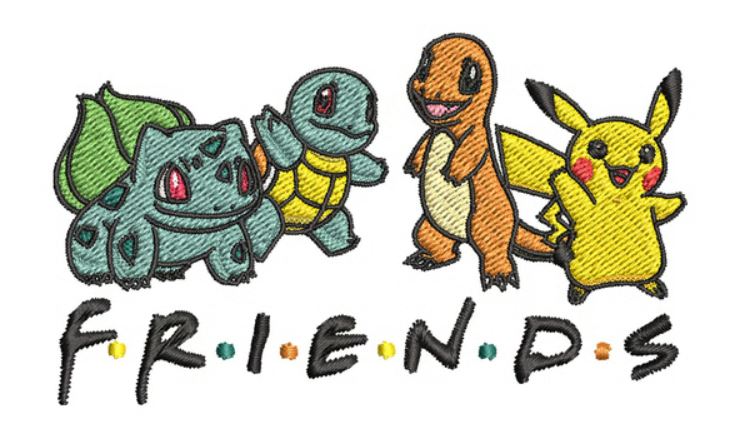News
How Pokemon Characters Are Brought to Life in Embroidery
Pokemon has been a cultural phenomenon since the late ’90s, captivating fans across generations with its colorful creatures, battles, and unforgettable adventures.
While games, cards, and animation dominate the Pokémon world, a growing number of artists are bringing their favorite Pokémon to life through a very different medium: embroidery.
Embroidery—a centuries-old textile art—is now being used to translate iconic characters like Pikachu, Charizard, and Gengar into wearable, stitch-perfect designs.
These thread-based interpretations offer a tactile, handmade alternative to printed merchandise, allowing fans to wear their love for Pokémon in a whole new way.
In this blog, we’ll explore how embroidery artists design and stitch Pokemon characters from sketch to wearable art.
We’ll go behind the scenes, examine the creative decisions involved, and see how these thread-based versions of Pokémon capture the spirit of the originals while adding something entirely unique.
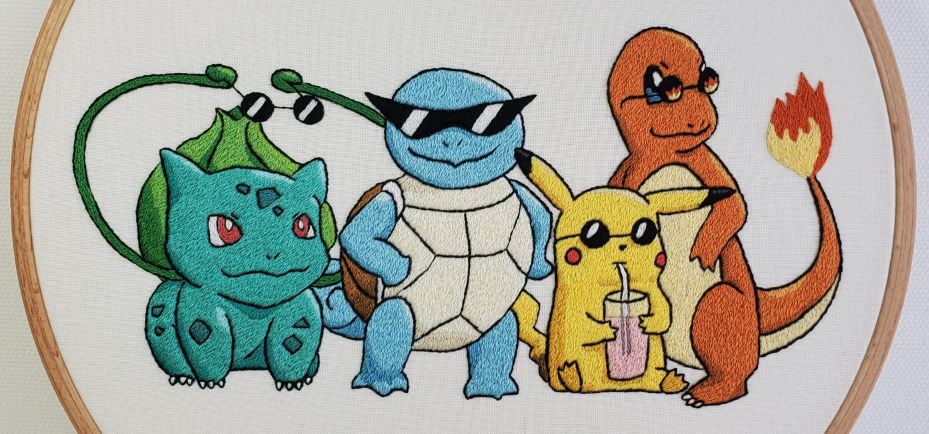
Why Pokémon Works So Well in Embroidery
Pokémon characters are perfectly suited for embroidery thanks to their strong outlines, bold colors, and expressive shapes.
Their designs are recognizable even at small scales—ideal for shirts, jackets, or patches.
Each Pokémon has its own personality, and embroidery adds texture and depth that brings those traits to life.
Unlike printing, which can feel flat and impersonal, embroidered Pokémon designs feel warm, tangible, and personal.
They invite interaction—you want to reach out and touch the stitches.
Fans often describe embroidered Pokémon pieces as nostalgic and comforting.
There’s something deeply satisfying about combining childhood memories with a handcrafted aesthetic.
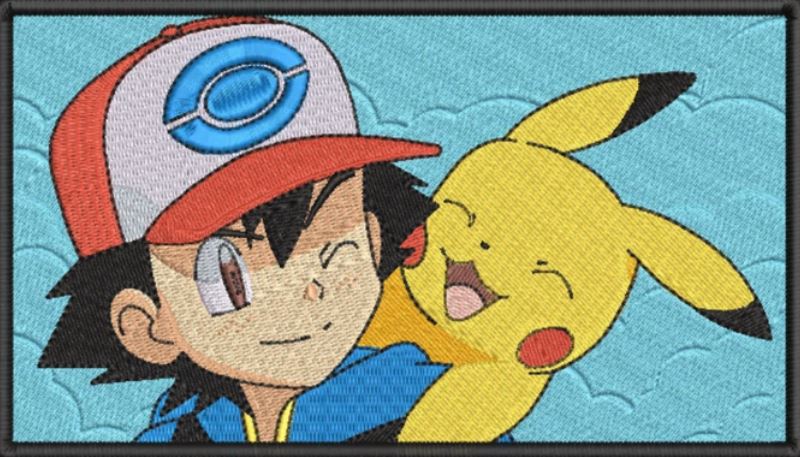
Choosing the Right Pokémon
The first step in the process is choosing which Pokémon to embroider.
This can be a personal decision based on the artist’s favorites, or a strategic choice based on what customers love.
Pikachu is always in high demand.
It’s the face of the franchise, instantly recognizable and visually simple.
Charizard, with its wings and fire, is popular for its dynamic poses. Gengar is a favorite among those who love ghost-types and edgier aesthetics.
Other popular choices include Eevee and its evolutions, starter Pokémon like Bulbasaur or Cyndaquil, and legendary creatures like Mewtwo.
The key is picking a design that’s both visually striking and adaptable to thread-based techniques.
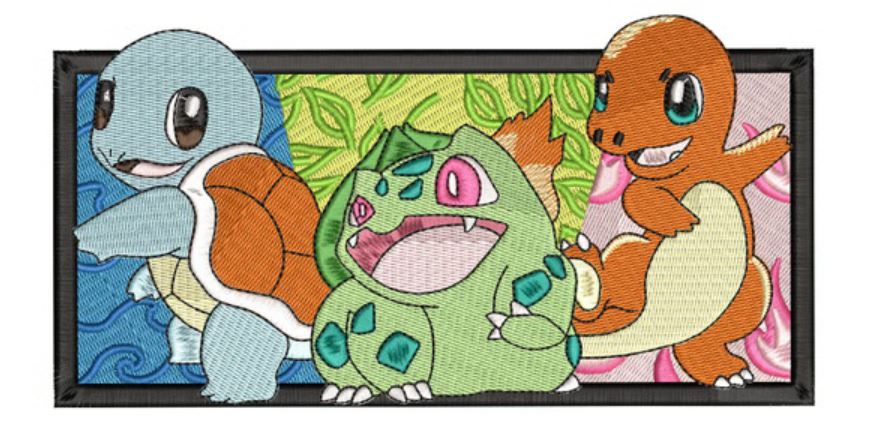
Sketching and Designing the Layout
Once the Pokémon is chosen, the next step is to plan the design. Some artists start by sketching the character on paper or tablet.
Others trace or adapt official artwork for embroidery use, simplifying the design to suit the limitations of thread.
Embroidery requires simplification.
Fine details, like tiny fingers or facial shading, can become messy or hard to replicate. Clean outlines and bold color blocks are much more effective.
Artists also consider pose and expression.
Should Pikachu be sleeping? Winking? In motion? These choices add emotional impact to the final piece.
Some artists create themed designs—like Pikachu in a Halloween costume or Gengar with a Christmas hat—to make the art seasonal and unique.
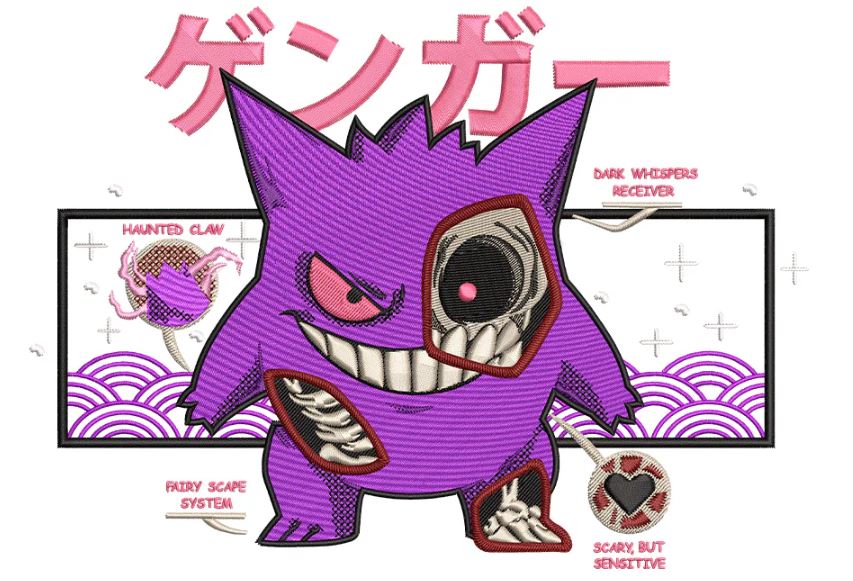
Digitizing the Design for Embroidery
For machine embroidery, the artwork must be digitized.
This means converting the design into a file that embroidery machines can understand, like a .DST or .PES file.
Digitizing is both an art and a science. It involves mapping every stitch: which direction it runs, how long it is, and how each area is filled.
Outlines are usually created with satin stitches—smooth, dense lines that define the shape.
Larger areas, like Charizard’s wings, use fill stitches to create even texture.
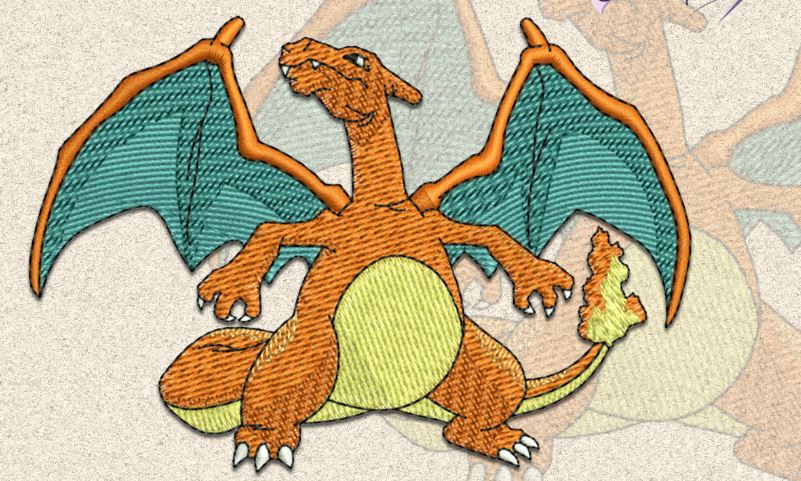
Good digitizing ensures that the final embroidery looks clean, with no gaps, bunching, or loose threads.
Poor digitizing can result in off-center features, sloppy outlines, or ruined fabric.
Many artists use software like Wilcom, Hatch, or SewArt to digitize their designs.
This step often takes longer than the stitching itself and requires multiple test runs to perfect.
Matching Thread Colors to Pokémon
Color is critical when recreating Pokémon. Each character has a specific palette that fans instantly recognize.
Pikachu’s electric yellow, Gengar’s shadowy purple, Charizard’s fiery orange—these must be carefully chosen using real-world threads.
Unlike digital art, thread choices are limited to available physical spools.
Artists often use conversion charts to match digital colors to thread brands like Madeira, DMC, or Brother.
Some colors require blending.
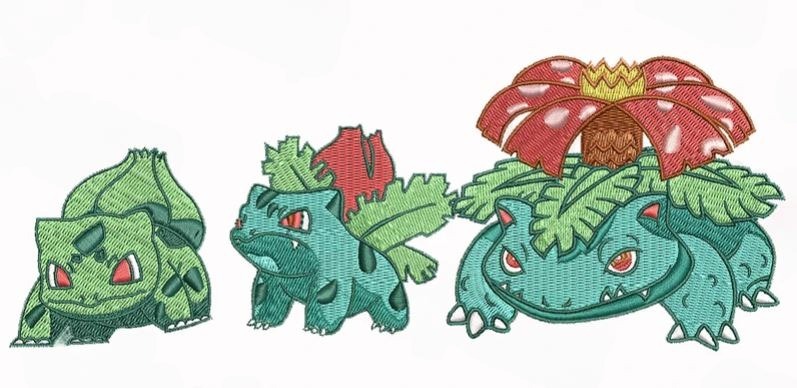
For example, Gengar’s body might use two or three shades of purple to create a sense of depth. Charizard’s flame often uses gradients of red, orange, and yellow.
Specialty threads, like metallic or glow-in-the-dark, can add a magical touch. Gengar’s eyes might glow in the dark. Charizard’s flame might sparkle with metallic thread.
These details bring characters to life in a way flat prints never can.
Choosing Fabric and Stabilizers
What you embroider on matters just as much as the design.
Embroidery can be done on a wide range of garments and accessories—t-shirts, hoodies, denim jackets, tote bags, or even hats.
Each fabric requires a different approach. Stretchy t-shirts need a cut-away stabilizer to prevent distortion.
Thick jackets benefit from tear-away or adhesive stabilizers to keep the fabric firm during stitching.
Hooping is also crucial.
The fabric must be secured tightly to avoid shifting during stitching. Poor hooping leads to misaligned designs, crooked outlines, and wasted materials.
For wearable embroidery, comfort is important too. Artists avoid dense stitching on soft garments like hoodies to ensure the final piece feels good on the skin.
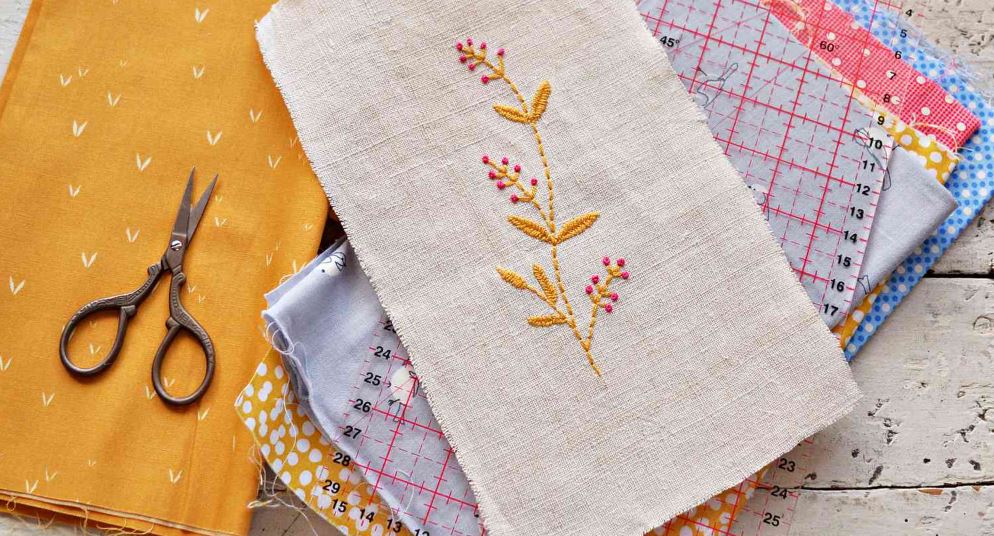
Stitching Pokémon with Personality
Let’s look at how some of the most iconic Pokémon are brought to life through different stitch techniques and styles.
Pikachu: Cute and Clean
Pikachu’s round face, rosy cheeks, and lightning bolt tail make it a natural fit for embroidery.
It’s often stitched using clean satin outlines and smooth fill stitches for the body.
Some artists use felt or appliqué for the cheeks or belly to make them pop. Others add tiny blush stitches or stars around Pikachu for extra cuteness.
Because Pikachu is so expressive, artists often play with emotions—smiling, sleeping, blushing, or even in cosplay.
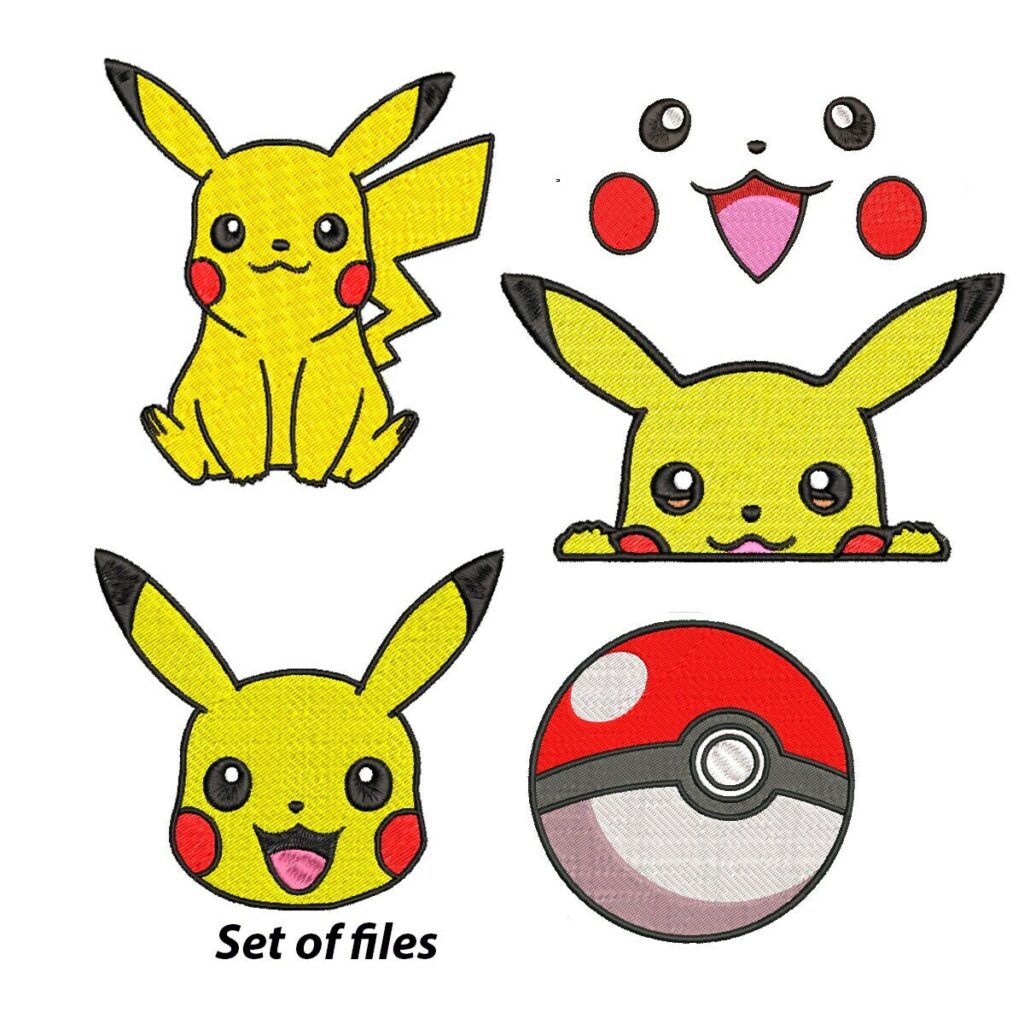
Charizard: Powerful and Fiery
Charizard is a more complex design. Its wings, horns, and flame require careful planning and layering of stitches.
Fill stitches are used to shade the muscles and wings.
Flame designs may use gradient threads or a combination of satin and fill stitches to convey movement.
Charizard is often embroidered mid-roar, wings spread wide, ready to battle. This pose requires good digitizing to avoid bulky overlaps or misaligned details.
Metallic or glow-in-the-dark threads are often used for the flame, eyes, or background effects to create a dynamic visual punch.
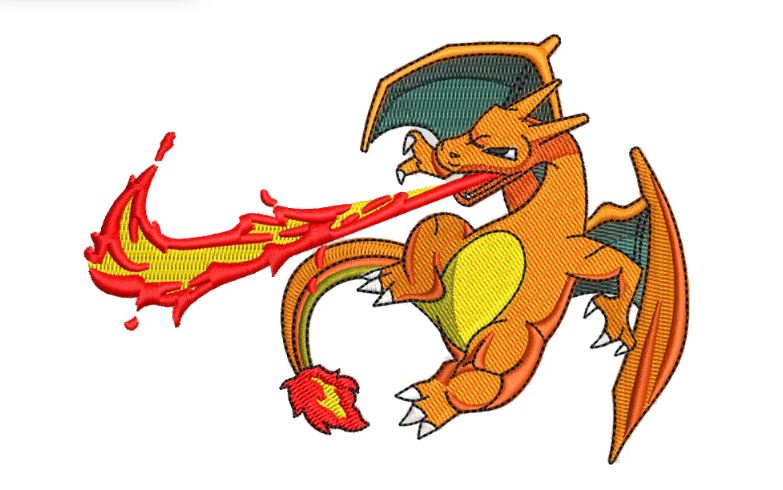
Gengar: Bold and Spooky
Gengar’s mischievous grin and shadowy body make it ideal for bold, stylized embroidery.
Artists typically use thick outlines and high-contrast red eyes to make the face pop.
The body is usually stitched in varying purples, sometimes with subtle shading to show volume.
To enhance Gengar’s ghost-type vibe, some artists add glow-in-the-dark thread, spiderweb backgrounds, or swirling mist effects.
Others stitch Gengar surrounded by mini Gastly or Haunter designs for a layered, spooky look.
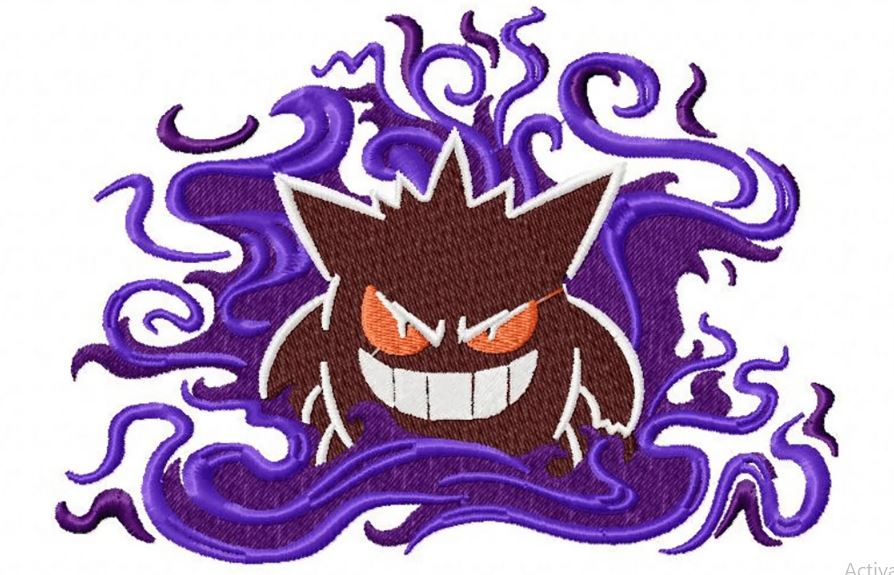
Adding Creative Touches
Artists don’t just copy the characters—they add personality.
Many embroidery pieces feature Pokémon in creative situations: wearing sunglasses, holding flowers, drinking bubble tea, or sleeping on a crescent moon.
These reinterpretations make each piece unique. They also make the embroidery more wearable.
A Gengar patch with a cute ghost cat next to it might appeal to both Pokémon fans and lovers of alternative fashion.
Other popular additions include:
- Pokédex numbers stitched beneath the character
- Pokémon names in Japanese or stylized fonts
- Trainer names personalized for the wearer
- Badges, Pokéballs, or environmental elements (leaves, flames, stars)
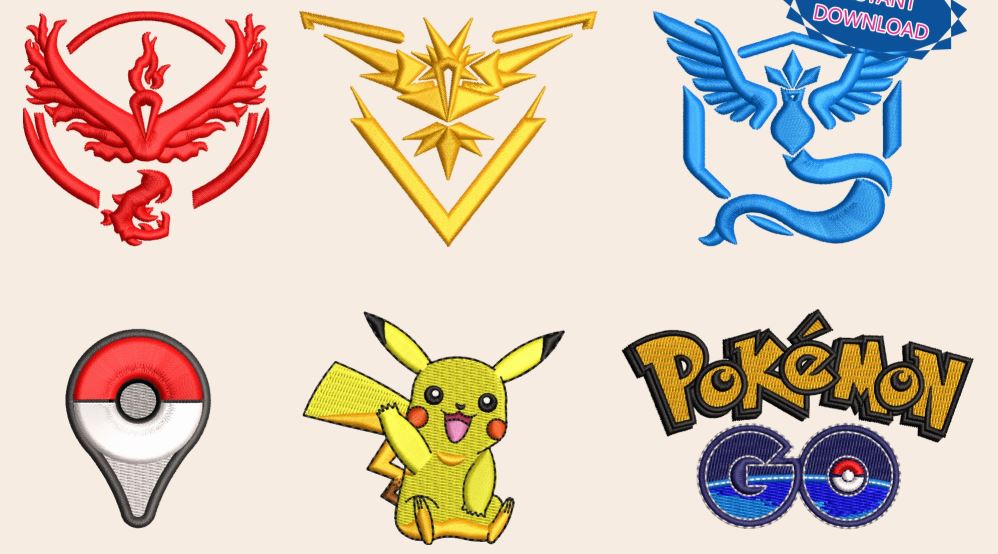
The Emotional Power of Thread
At its core, Pokemon embroidery is about more than art—it’s about emotion.
Every stitch is a memory. A tribute. A reflection of how much these characters mean to us.
The process of turning a digital sprite into a stitched, tangible artwork is slow and intentional. It’s the opposite of fast fashion. It’s storytelling through texture.
For fans, wearing an embroidered Pikachu or Gengar isn’t just style—it’s a badge of belonging, a wearable symbol of identity, and a nostalgic nod to childhood wonder.
Want to Try It Yourself?
If you’re inspired to start embroidering Pokémon, here are a few beginner tips:
- Start with simple characters like Jigglypuff or Eevee.
- Use embroidery transfer pens or water-soluble paper to draw your design.
- Begin with hand embroidery to understand stitches before moving to a machine.
- Use 6-strand embroidery floss and learn stitches like backstitch, satin, and split stitch.
- Share your first pieces online—you’ll find a whole community ready to support you!
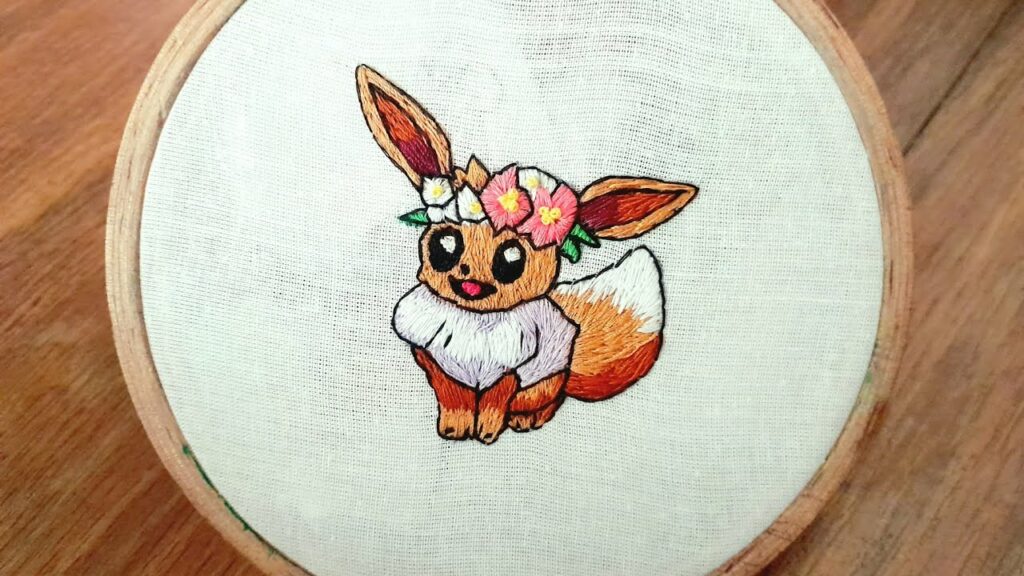
Final Thoughts
From nostalgic memories to expressive wearable art,
Pokemon embroidery captures the essence of fandom through craft. Each design tells a story. Each stitch reflects care, passion, and creativity.
Whether it’s Pikachu’s cheerful grin, Charizard’s roaring flame, or Gengar’s ghostly smirk, these stitched creatures feel alive in a way no printed t-shirt ever could.
They’re not just decorations—they’re declarations.
So grab your hoop, thread your needle, and start stitching your very own piece of the Pokémon world.
It’s time to bring your favorite characters to life—one stitch at a time.

